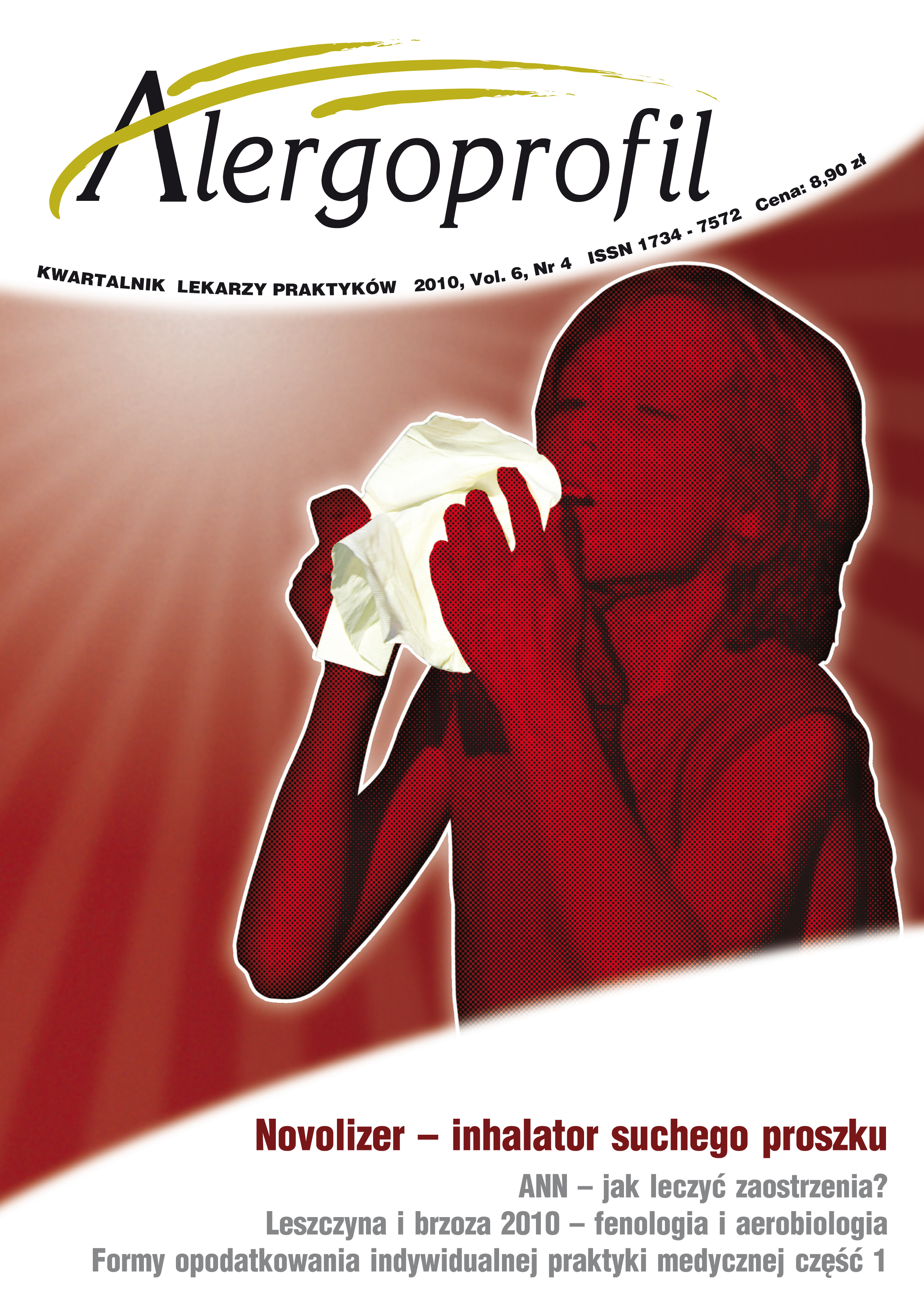Evaluation of management in pharyngeal globe identified as psychosomatic illness or allergic inflammation
Main Article Content
Abstract
The characteristics of pharyngeal globe (KG) as globus hystericus or globus allergicus is different due to the source description. The aim of the study was valuation of KG rehabilitation (as somatic disease) by S. Naskiewicz method (SN) against treatment valuation KG (perceive as inflammatory allergic disease) by K. Buczyłko method (KB) among allergic patients. The material of study was contained of 45 NZOZ Centrum Alergologii patients (aged 18–80, 33 women and 12 men). 27 patients declaimed total relief, 11 – positive effects of allergologic therapy, 1 person – lack of effect and 3 patients declared strongly lack of effect in our survey. None of them made the decision of participation in physiotherapy by SN method (visualization with breathing exercises). The decision was motivated by the fact, that they were diagnosed and treated correctly. In investigated group organic changes with allergy prevailed psychosomatic mechanisms.
Downloads
Article Details
Copyright: © Medical Education sp. z o.o. This is an Open Access article distributed under the terms of the Attribution-NonCommercial 4.0 International (CC BY-NC 4.0). License (https://creativecommons.org/licenses/by-nc/4.0/), allowing third parties to copy and redistribute the material in any medium or format and to remix, transform, and build upon the material, provided the original work is properly cited and states its license.
Address reprint requests to: Medical Education, Marcin Kuźma (marcin.kuzma@mededu.pl)
References
2. Finkenbine R., Miele V.J.: Globus hystericus: a brief review. Gen. Hosp. Psychiatry 2004, 26(1): 78-82.
3. Buczyłko K.: Globus allergicus pharynges (GAPh) – nowy zespół chorobowy w laryngologii. Klinika 1998, 5(4): 434-9.
4. Gale C.R., Wilson J.A., Deary I.J.: Globus sensation and psychopathology in men: the Vietnam experience study. Psychosom. Med. 2009, 71(9): 1026-31.
5. Polski słownik medyczny – P.A.N. Wydział II Nauk Medycznych. PZWL, Warszawa 1981.
6. Korzeniowski L., Pużyński S.: Encyklopedyczny słownik psychiatrii. PZWL, Warszawa 1986.
7. Saunders H.I.E.: 29th edition Dorland’s Illustrated Medical Dictionary. Philadelphia 2000.
8. Kiese-Himmel C.: Globus sensation: A clinical review. HNO 2010, 58(6): 586-94.
9. Spergel J.M., Andrews T., Brown-Whitehorn T.F.: Treatment of eosinophilic esophagitis with specific food elimination diet directed by a combination of skin prick and patch tests. Ann. Allergy Asthma Immunol. 2005, 95(4): 336-4.
10. Davids T., Sommer D.D., Armstrong D.: Survey of current perspectives on laryngopharyngeal reflux among Canadian otolaryngologists. J. Otolaryngol. Head Neck Surg. 2008, 37(2): 196-202.
11. Randhava P.S., Mansuri S., Rubin J.S.: Is dysphonia due allergic laryngitis being misdiagnosed as laryngopharyngeal reflux? Logopd. Phoniatr. Vocol. 2010, 35(1): 1-5.
12. Naskiewicz S.: Rehabilitacja choroby psychosomatycznej wobec organicznej na podstawie globus hystericus. Praca mgr. Uniwersytet Medyczny, Łódź 2007.
13. Rosławski A., Skolimowski T.: Techniki wykonywania ćwiczeń leczniczych. PZWL, Warszawa 2005.
14. Guszkowska M.: Wpływ ćwiczeń fizycznych na poziom lęku i depresji oraz stany nastroju. Psychiatria Polska 2004, 38(4): 611-620.
15. Epstein G.: Uzdrowienie przez wizualizację. Zysk i S-ka 1996.
16. Karkos P.D., Benton J., Leong S.C. et al.: Trends in laryngopharyngeal reflux: a British ENT survey. Eur. Arch. Otorhinolaryngol. 2007, 264(5): 513-7

